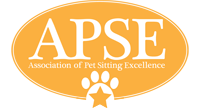One of the most common complaints of pet parents is that their dogs are disruptive or destructive when left alone. Their dogs might urinate, defecate, bark, howl, chew, dig or try to escape. Although these problems often indicate that a dog needs to be taught polite house manners, they can also be symptoms of distress. When a dog’s problems are accompanied by other distress behaviors, such as drooling and showing anxiety when his pet parents prepare to leave the house, they aren’t evidence that the dog isn’t house trained or doesn’t know which toys are his to chew. Instead, they are indications that the dog has separation anxiety. Separation anxiety is triggered when dogs become upset because of separation from their guardians, the people they’re attached to.
Usually, right after a guardian leaves a dog with separation anxiety, the dog will begin barking and displaying other distress behaviors within a short time after being left alone—often within minutes. When the guardian returns home, the dog acts as though it’s been years since he’s seen his mom or dad!
Simulated vs. true dog separation anxiety
There is true separation anxiety, and there is simulated separation anxiety, in which the dog behavior appears to be separation anxiety but it is, in fact, a learned behavior.
Simulated separation anxiety is often manifested when the dog lacks leadership as well as self-control. True separation anxiety, on the other hand, causes the dog to experience real stress during the absence of his owner.
In simulated separation anxiety, the dog knows that he will get attention if he acts badly. For some dogs, even being verbally reprimanded for such behavior is rewarding because he feels he was noticed.
Negative attention can be a reward in many cases, if the owner is unaware that certain needs of his dog are not being met. In these cases, there is little real stress involved, just misbehavior.
Simulated separation anxiety is fairly easy to overcome with a gradual approach, slowly increasing the amount of time spent in a crate—when you are at home as well as away—consistent obedience training, proper amounts of exercise, and strong leadership.
Severe cases of true separation anxiety impose a challenge to Pack Leaders.
Causes of dog separation anxiety
Dog separation anxiety is often unknowingly encouraged by dog owners. We make a big fuss when we leave or come home, and in doing so we reward the dog’s concern with our absence, provoking in him even more stress every time we leave.
We like our dogs to be with us and when they are puppies, we take them everywhere for socialization. Then, we have to leave them alone, but they reach an age when they not only want, but also feel the need to be with us—we are their source of confidence, their security, and their pack.
A change in their routines can create the symptoms of dog separation anxiety, but destruction and stress can also be created by boredom and lack of exercise. Terriers are born to dig, retrievers to carry and protection breeds to protect. So, in some instances we are holding them back from their instincts and drives, rather than nurturing them.
Remember Cesar’s mantra, which is a good start to correcting these problems: exercise, discipline, and only then, affection. You need to establish a balance between patience, obedience, and confidence in your dog.
Aim to develop a behavior in our dog that reflects the harmonious partnership you both share. He should have enough confidence in himself and in your leadership. This way, he can be confident in situations, such as being left alone, because he knows that you will always provide the leadership and guidance required. He trusts and knows that you will come home.
How to prevent dog separation anxiety
It really starts the moment you get your puppy. All too often a puppy taken from the litter begins to cry when left alone. This is a big change for the pup, they no longer have the pack they were born with. When he cries, we go and pick him up and show sympathy—his crying is rewarded. Later, if he is crying in a crate, and you let him out he is being rewarded for his crying. Only reward desired behavior.
From the beginning, we need to teach our pup to be quiet and settle down for increasing periods of time. We need to teach patience and calmness and reward that instead. When he is out with us, we should not be attempting to constantly interact with him. Let him learn to entertain himself with his toys.
Teach the pup to accept the crate. Allow him to explore under supervision and to learn the limits and boundaries of his environment; to gain respect for this environment, and for the people in it. That means consistency in all the things you do, and that includes everyone in the family who interacts with your dog.
Separation anxiety in dogs is often reduced when they get a walk. Taking your dog for a nice long walk before you leave for the day or on a trip sets him up naturally for “down time.” Don’t have time? Consider hiring a local dog walker, which is well worth the cost. A tired dog is happier. He’s eliminated, he’s worn out, and he’s ready for a nap. Regular daily exercise helps your dog work out tensions and anxieties that may be building up.
Consider natural supplemental items
Rescue Remedy and other natural calming aids, or thundershirts might help to ease the anxiety.
Separation anxiety can be overcome, you can turn some dogs around fairly quickly, with others it takes time, patience, and consistency.
Exercise, obedience, and lifestyle training; leadership; rules, boundaries, and limitations, all of these are necessary for a balanced dog. Consistency from you and from every human in your household will be also crucial to build your dog’s confidence in you as his Pack Leader, and also in himself.

